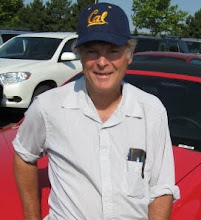Author of Sharene:
Death: A Prerequisite For Life
A Brief Biography of Fidel Castro
Whether one hates or loves the man, any biography of Fidel Castro, Cuba’s long-time iron fisted Communist ruler from 1959 until the present, now involved in removing himself from public view because of ill health, cannot deny the man is intelligent, forceful, and has instituted many impressive domestic programs during his reign.
Today, high quality, free medical service is available to all; the nation has an incredible 98 percent literacy rate; and infant mortality rates are low.
Still, a 2008 BBC news report said of Castro--who’s outlasted nine U.S. presidents during his tenure as Cuba’s president, and weathered, according to one Cuban minister, ‘more than 600 CIA assassination attempts,’--“While many Cubans undoubtedly detest Castro, others genuinely love him. He is the David who stood up to the Goliath of America.”
A Marxist-Leninist revolutionary as early as age 21 when he participated in a failed coup in the Dominican Republic, Castro was a long-time friend of Argentinean-born revolutionary Ernesto “Che” Guevara, and now with Venezuela’s socialist leader, Hugo Chavez.
Castro’s Communist ideals promoted a close association with the Soviet Union that, in 1962, led to the Cuban Missile Crisis where, with Soviet nuclear missiles based on Cuba aimed at the U.S., the world came as close as it’s ever been to nuclear war.
An eloquent speaker and writer with a doctorate in law from Havana University, Castro led an unsuccessful coup attempt to oust Cuba’s corrupt government led by Fulgencio Batista in 1952, and later a successful Cuban coup in 1959.
Imprisoned and placed on trial following the 1952 coup attempt, Castro defended himself with his well-acclaimed “History Will Absolve Me” speech. One snippet from it reads, “The fact is, when men carry the same ideals in their hearts, nothing can isolate them--neither prison walls or the sod of cemeteries.”
Major events in the life of Fidel Castro include:
* August 13, 1926 Born in southeastern Cuba
* 1947 Participates in failed Dominican Republic coup
* 1950 Earns doctorate in law
* 1953 Leads failed Cuban coup, imprisoned for two years
* 1955 Flees to Mexico, organizes July 26 Movement, meets “Che” Guevara
* 1956 Lands in Cuba with 81 fighters, begins revolt
* 1959 Batista flees, Castro begins his Cuban rule
* 1961 Defeats 1,400 at U.S.-backed Bay of Pigs invasion
* 1962 Cuban Missile Crisis
* 1970s Sends Cuban troops to support Marxist guerrillas in Angola, Mozambique, Ethiopia
1998 Pope John Paul II visits Cuba
2006 Assigns temporary transfer of power to brother, Raul Castro
After the U.S. put a trade embargo on Cuba in 1963, Castro turned more and more to the Soviet Union for economic assistance. But the subsequent breakup of the Soviet Union cost Cuba billions of dollars in foreign aid.
Still, the defiant Communist leader of Cuba, near the shores of Florida, is resourceful and adamant in his outspoken opposition to anything involving the U.S.
Without doubt, the biography of Fidel Castro will grace future history books.





